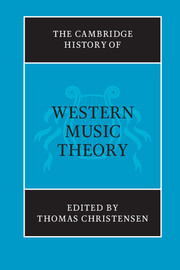30 - Energetics
from B - Music psychology
Published online by Cambridge University Press: 28 March 2008
Summary
As a rubric for music-theoretical literature focused on music’s dynamic qualities, “energetics” is unrestrictively broad in scope on the one hand, and restrictively narrow on the other. It is broad because ever since ancient times authors have identified motion as a fundamental aspect of music, and narrow because specific references to “energy” in music, or analogies with force, power, or similar concepts from the domain of physics, are historically limited, appearing first with regularity in the decades straddling 1900. In fact, the term energetics was first coined in 1934 by an historian of aesthetics, Rudolf Schäfke, who proposed it as a way of characterizing the work of several theorists active in the early twentieth century, primarily Heinrich Schenker, August Halm, and Ernst Kurth, although the nature and language of certain contemporaries, likewise German-speaking (Arnold Schering, Hans Mersmann, Kurt Westphal), associate them with energetics. As Schäfke points out (p. 395), if authors had long recognized the primacy of motion and tonal flux in music, they did not thematize motion to the same degree as did the energeticists, or isolate it from music’s affects.
2.
- Type
- Chapter
- Information
- The Cambridge History of Western Music Theory , pp. 927 - 955Publisher: Cambridge University PressPrint publication year: 2002
References
- 33
- Cited by

